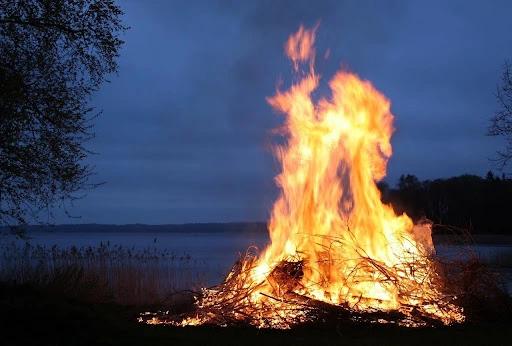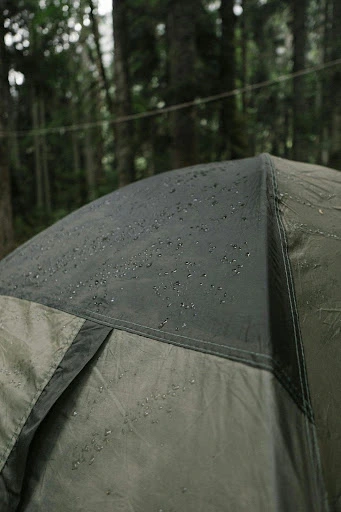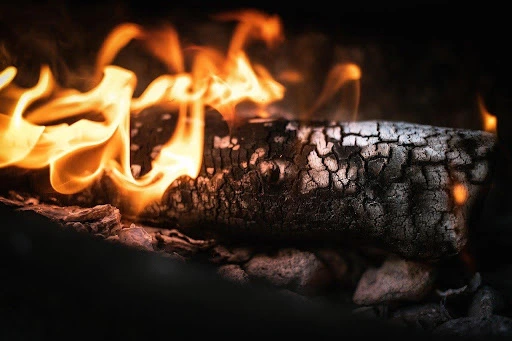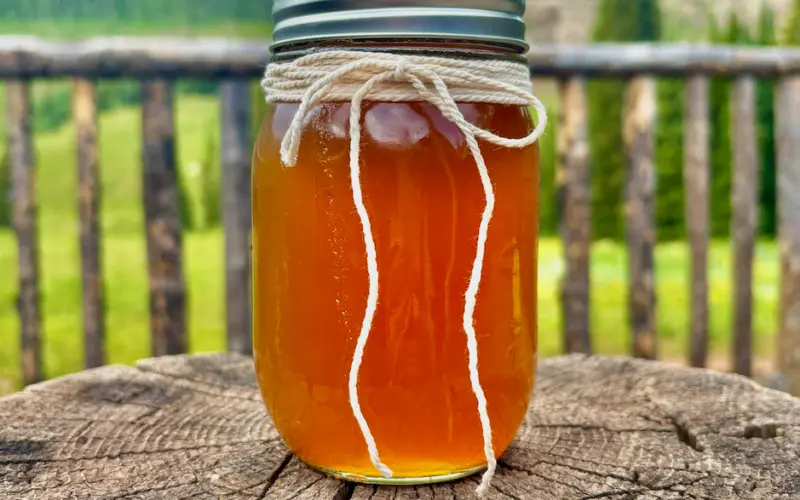One of the biggest challenges for even experienced campers is starting a fire in damp weather conditions. Wet wood, whether from prolonged rainfall or freezing during the winter, does not burn easily. A fire with wet wood usually ends up just a smoldering mess, which is a monumental task just to keep burning.
There is a light at the end of it all, though. You can still start a fire with wet wood using a few techniques and some wishful thinking. This guide will walk you through everything you need to know, from understanding the science behind fire-starting in damp conditions to advanced techniques to getting one started.
Table of Contents
Understanding the Science: How Moisture Affects Fire-Starting Materials
To successfully start a fire in damp conditions, it’s crucial to understand how moisture affects your fire-starting efforts. When materials are wet, they require more energy to ignite and sustain a flame. If the rain has only been falling for an hour or so then you should have no issues starting a fire because the moisture wouldn’t have penetrated far enough down to soak the wood yet. However, heavy rain that is sustained can quickly drench dense wood.
The Role of Moisture
Moisture in wood and other fire-starting materials significantly lowers their combustion temperature. This means you’ll need to generate more heat to get your fire going. Wet materials also produce more smoke and less heat, making it harder to maintain a steady flame.
In addition to lowering combustion temperature, moisture also creates a barrier between the fuel and oxygen needed for fire. The water molecules in wet wood absorb most of the heat energy, making it difficult for the fire to spread.
When you attempt to light damp materials, the initial heat goes into evaporating the moisture, rather than igniting the material itself. This is why damp wood hisses and smokes while it burns.
Not all wood is created equal, especially when it’s wet. Hardwood, for example, is denser and retains more moisture compared to softwood. Softwood, such as pine, dries quickly and ignites easily. Its resin content allows it to burn even when wet.
Preparing and Finding Suitable Materials
When the wilderness serves up a wet and wild challenge, you’ll need to be resourceful when starting a fire. Finding and preparing dry materials can be the difference between a roaring fire and a smoldering mess. Here’s how to do it.
Sourcing Dry Wood
Even in damp conditions, you can find dry wood if you know where to look. Search for:
- Dead branches are still attached to trees, as they are less likely to be soaked through.
- Wood under thick foliage or rock overhangs offers some natural protection from the rain.
- The inner layers of logs, which can be dry even if the outer layers are wet—split the wood to access the dry core.
Prepping Your Materials
Preparation is the key to success. You may only get one shot before you have to go and prepare some more resources. Once you’ve gathered your materials, take the following steps:
- Strip the Bark: The bark traps moisture, so remove it to expose the drier wood beneath.
- Feather Sticks: Create feather sticks by shaving thin curls into a piece of wood. This increases the surface area, making it easier to catch a spark.
- Drying Techniques: Once you have a small fire started you can start to stack the wood near it to dry out.
- Split the Wood: Breaking down the wood into smaller pieces will allow them to dry out quickly.
Using Natural Resources
Nature provides several resources that can help you start a fire, even when it’s wet:
- Pine Resin: Found in coniferous trees, pine resin is highly flammable and can act as an excellent fire starter.
- Dry Leaves and Grass: Look for leaves and grass that are sheltered or have dried quickly after the rain. These can be used as tinder.
- Birch Bark: Birch bark has oils within it that will still allow it to burn if you can separate the thin layers between the bark.
Tools of the Trade for Reliable Fire-Starting in Damp Conditions
There are so many options available for fire starters that work in wet conditions so as long as you’re prepared there shouldn’t be an issue. Here’s a rundown of essential fire-starting tools.
Fire Starters
Investing in reliable fire starters designed for wet conditions is one of the smartest options you can make for your kit. Some options include:
- Ferrocerium Rods: These rods produce a shower of sparks when struck with a metal scraper. They’re durable and work in wet conditions.
- Magnesium Blocks: Scrape off shavings and ignite them with a spark. Magnesium burns hot and fast, helping to dry out and ignite damp materials.
- Waterproof Matches: Specially treated to resist moisture, these matches are very thick and usually covered in some kind of wax.
Lighters and Igniters
A good lighter can be invaluable. Consider:
- Stormproof Lighters: Wind-resistant and waterproof, these lighters are built to perform in harsh conditions.
- Electric Arc Lighters: Rechargeable and windproof, they use an electric arc to ignite materials. The downside is that they rely on batteries to work.
Tinder and Kindling
Pre-made tinder and kindling can save you time and effort:
- Commercial Tinder: Products that incorporate wax, sawdust, and other fire accelerants are plentiful at your local store
- DIY Tinder: Carry a small tin of cotton balls soaked in petroleum jelly or wax-coated pieces of cardboard.
Advanced Strategies to Amplify Heat and Maintain a Fire in Dampness
Once you’ve got your fire started, keeping it going in damp conditions requires some advanced strategies. Here’s how to amplify heat and maintain your fire.
Building a Solid Base
A solid base is crucial for a long-lasting fire:
- Platform of Dry Wood: Lay down a platform of dry wood to keep your fire off the wet ground. This helps to insulate it from moisture below.
- Reflective Walls: Construct a reflective wall using logs or rocks to direct heat back toward your fire, increasing its temperature and efficiency.
Oxygen and Airflow
Proper airflow is essential for maintaining a strong fire:
- Teepee Structure: Build your fire in a teepee structure to allow plenty of airflow. This helps the fire burn hotter and more efficiently.
- Keep Coal Exposed: Structure the fire so that you can easily add small sticks to the coal base through the sides or bottom. This will help the coals dry out the larger wet pieces on top.
Final Thoughts
Starting a fire in damp conditions can be challenging, but with the right knowledge and preparation, it’s entirely possible. Understanding the science behind moisture and fire, sourcing and preparing dry materials, using reliable tools, and employing advanced strategies can make all the difference. Don’t forget to bring multiple backups of each fire starter that you want to use and practice before heading out on a rainy trip to make sure you’re confident.











